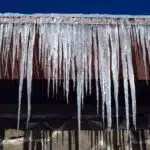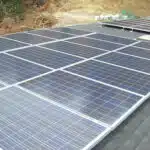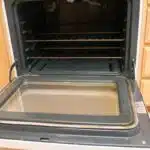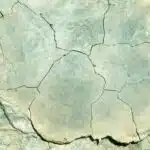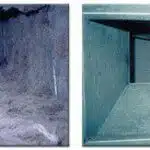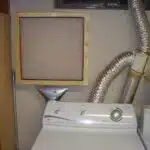Gutters are one of the most important components of a home’s exterior, responsible for directing rainwater away from the foundation and preventing costly water damage. However, gutters are not immune to problems, and neglecting their upkeep can lead to serious issues such as leaks, clogs, and overflowing. As a home improvement expert, I have seen firsthand the consequences of poorly maintained gutters and the importance of addressing common problems promptly.
In this article, we will explore some of the most common gutter problems homeowners face and provide DIY fixes that can be done at home. By understanding these issues and taking proactive measures to maintain your gutters, you can ensure that they continue to function properly and protect your home for years to come. Whether you are a seasoned DIYer or just starting out on your home improvement journey, this guide will provide practical tips and techniques for keeping your gutters in top condition.
Water Overflowing From Gutters
Overflowing water from gutters is a common problem that homeowners face. It not only damages the foundation, walls, and roof of the house but also poses a risk to personal safety. Overflowing gutters can cause slippery surfaces and create an ideal breeding ground for pests such as mosquitoes. To prevent this, regular maintenance of gutters is essential.
Preventing overflow: maintenance tips include cleaning out debris from gutters at least twice a year. This helps to ensure that water flows freely through the gutter system. Additionally, checking the downspouts regularly ensures that there are no blockages that could cause water accumulation in the gutter system. Another tip is to repair any leaks or holes in the gutter system as soon as possible to prevent water from escaping and overflowing.
Improving drainage: gutter extensions can be installed to increase rainwater collection capacity by directing it away from the house foundation. French drains are another solution for improving drainage by redirecting water using a perforated pipe surrounded by gravel or rock. Landscaping solutions such as creating a swale or building up soil around the foundation can also help improve drainage.
Moving on to clogged gutters and downspouts, it’s important to understand how they occur and their effects on your home’s structure and surroundings.
Clogged Gutters And Downspouts
When water is overflowing from gutters, it can cause damage to your home’s foundation and landscaping. However, another common gutter problem is clogged gutters and downspouts. This can lead to water backing up and causing damage to your roof, siding, and even your interior walls.
Preventive measures can be taken to avoid clogged gutters and downspouts. First, consider installing gutter guards or screens. These can help prevent debris from entering the gutters in the first place. Additionally, trimming overhanging trees that may be dropping leaves or branches onto the roof can also help reduce the amount of debris that finds its way into the gutters.
If preventive measures fail, it may be time to call in professional services for a thorough cleaning of your gutters and downspouts. Professional services have the necessary equipment and expertise to safely remove all debris from your gutters without causing any damage to your property. They may also be able to identify other potential issues with your gutters and recommend repairs or replacements as needed.
Transition: While clogged gutters are a common issue homeowners face, sagging gutters can also cause problems if not addressed promptly.
Sagging Gutters
Sagging gutters can be a common problem for homeowners, especially those who live in older homes with outdated gutter systems. This issue usually occurs when the gutters are not properly reinforced and become weighed down by debris or heavy snowfall.
One DIY fix for sagging gutters is to reinforce them with additional hangers or brackets. This can be done by using a ladder to access the gutter system and installing new hangers at regular intervals along the length of the gutter. However, it’s important to note that this method requires some skill and experience, as well as the proper tools and equipment.
For those who are unsure about their ability to safely and effectively reinforce their sagging gutters, professional installation may be the best option. A professional contractor will have the necessary expertise and equipment to install new hangers or brackets as needed, ensuring that your gutter system is secure and functional for years to come. While this option may require an investment upfront, it can save you time and money in the long run by preventing more extensive damage to your home’s foundation and landscaping.
As you can see, there are both DIY fixes and professional options available for addressing sagging gutters. Whether you choose to take on this project yourself or hire a contractor, it’s important to take action promptly in order to prevent further damage. In the next section, we’ll explore another common gutter problem: leaking seams and joints.
Leaking Seams And Joints
Leaking seams and joints are a common gutter problem that can lead to water damage if not fixed promptly. Fortunately, there are several DIY solutions that homeowners can try before calling a professional. One of the simplest fixes is to apply a waterproof sealant to the affected area. This will prevent water from seeping through the seam or joint and causing further damage.
Another maintenance tip is to regularly inspect the gutters for debris buildup, as this can exacerbate leaking seams and joints. Clearing out any leaves, twigs, or other debris can help prevent clogs and ensure proper water flow. Additionally, it’s important to check for any loose or damaged parts, such as screws or brackets, which may need to be tightened or replaced.
Overall, addressing leaking seams and joints in a timely manner is crucial for protecting your home from water damage. By using these DIY solutions and practicing regular maintenance tips, homeowners can help prolong the lifespan of their gutters and avoid costly repairs down the line.
Moving forward, homeowners should also be on the lookout for gutter holes and cracks, which can further compromise the integrity of their gutters. To address this issue, there are several steps they can take to patch up small holes or cracks themselves without having to hire a professional.
Gutter Holes And Cracks
Gutter holes and cracks are common problems that homeowners may encounter. These issues can lead to water damage, foundation problems, and other costly repairs. Fortunately, there are several ways to fix these problems without the need for professional repair.
One solution is to use patch kits. These kits usually contain self-adhesive patches made of aluminum or vinyl material that can be easily applied over the damaged area. Simply clean the area around the hole or crack, apply the patch, and press it firmly into place. This quick fix can help prevent further damage and extend the life of your gutters.
However, if you are not comfortable doing the repair yourself, it’s best to call in a professional for help. A professional repair service will have the knowledge and tools needed to assess the problem accurately and provide a long-lasting solution. In addition, they can identify any underlying issues that may have caused the damage in the first place.
In summary, gutter holes and cracks should not be ignored as they can lead to more significant problems down the road. If you’re handy with DIY repairs, patch kits can be an easy fix for small damages. However, if you’re unsure about how to proceed or if you suspect there might be more extensive damage than what’s visible on the surface; it’s always best to seek professional assistance from an expert in gutter repair services.
As we move forward into discussing rust and corrosion in gutters let’s consider another aspect of maintaining healthy gutters: cleaning them regularly.
Rust And Corrosion
Preventing rust and corrosion is crucial in ensuring the longevity of your gutter system. Rust and corrosion are common problems that can cause significant damage to gutters, especially when left unchecked. To prevent this problem, always choose the right gutter materials. Some materials are more resistant to rust and corrosion than others. For instance, aluminum and stainless steel gutters are excellent choices for homeowners who want to avoid dealing with rust issues.
Choosing the right gutter material is just one step in preventing rust and corrosion. Regular maintenance is also necessary to ensure that your gutters remain clean and free from debris that can cause rust and corrosion over time. Cleaning your gutters at least twice a year is recommended to keep them in good condition. Additionally, you can apply a protective coating to your gutters to help prevent rust and corrosion from forming.
To fully understand how important it is to prevent rust and corrosion, here are three consequences of ignoring this issue: 1) Rusty or corroded gutters can cause water damage to your home’s foundation; 2) The cost of repairing or replacing rusty or corroded gutters can be high; 3) The unsightly appearance of rusty or corroded gutters can decrease the curb appeal of your home. By taking steps to prevent rust and corrosion, you not only extend the lifespan of your gutter system but also protect your home from costly damage.
As important as preventing rust and corrosion may be, loose or missing hangers should not be overlooked either. Loose or missing hangers can cause sagging or misaligned sections in your gutter system, which could lead to water overflow during heavy rainfall. In the next section, we will discuss how to identify loose or missing hangers on your gutter system along with effective DIY fixes you can do at home without professional help.
Loose Or Missing Hangers
Rust and corrosion can be a major problem for gutters, but there are other issues that homeowners should be aware of as well. Loose or missing hangers, for instance, can also cause significant problems if left unchecked. Hangers are the brackets that hold the gutters in place along the roofline. If they become loose or fall off completely, rainwater can overflow from the gutters and damage the roof or foundation of the house.
One solution to this problem is to replace hangers that have become damaged or worn over time. This is a relatively simple DIY fix that requires only a few basic tools and some new hangers. However, it’s important to choose the right type of hanger for your gutter system and make sure that it’s properly installed to prevent any future problems. For example, some hangers are designed for use with specific types of gutters or roofing materials, so it’s important to do your research before making a purchase.
Preventative maintenance is also key when it comes to keeping gutters in good condition. Regular cleaning and inspection can help identify loose or missing hangers before they become a more serious issue. Additionally, checking for proper pitch and slope can ensure that water flows smoothly through the gutter system and doesn’t pool in one area, which can increase the risk of leaks or other damage.
Table: Types of Hangers
| Type of Hanger | Description |
|---|---|
| Spike-and-ferrule | A long nail (spike) is driven through a tube (ferrule) attached to the gutter, then into the fascia board behind it |
| Hidden bracket | Mounts inside the gutter itself; often used with seamless gutters |
| Strap hanger | Wraps around both sides of the gutter; commonly used with half-round gutters |
| Roof-mounted bracket | Attaches directly to the roof deck; good for areas with heavy snow or ice buildup |
Keeping gutters in good condition requires attention to detail and regular maintenance. Replacing hangers that have become loose or damaged is a simple fix that can prevent more serious problems down the line. By choosing the right type of hanger for your gutter system and keeping up with preventative maintenance, you can ensure that your gutters will continue to protect your home from water damage for years to come.
As important as it is to replace loose or missing hangers, improper pitch and slope can also cause issues for gutter systems. If the gutters aren’t angled correctly, water won’t flow smoothly through them, which can lead to leaks, overflow, or other types of damage. In the next section, we’ll take a closer look at this common problem and explore some solutions for correcting it.
Improper Pitch And Slope
A common gutter problem is improper pitch and slope. When gutters are installed, they must be pitched in a way that allows water to flow towards the downspouts. If the pitch is too shallow or uneven, water can accumulate in certain areas, causing damage to the roof and fascia boards. Adjusting pitch can be a DIY fix, but it requires some skill and knowledge.
To adjust the pitch of your gutters, you will need a level, a ladder, and some basic tools. First, inspect your gutters for any debris or blockages that may be affecting their ability to drain properly. Next, use the level to determine the slope of your gutters. If you find that they are not sloping towards the downspout as they should be, gently adjust them by loosening the hangers and repositioning them as needed. Be careful not to overcorrect or damage the gutters.
If adjusting pitch seems too difficult or if there are other issues with your gutters such as leaks or significant damage, professional repairs may be necessary. Hiring a professional gutter contractor will ensure that any problems are fixed correctly and efficiently. They have specialized tools and expertise in working with all types of gutter systems. Regular maintenance by professionals can also prevent future issues from arising.
Now that we have discussed how to address improper pitch and slope issues with your gutters let’s move on to another common gutter problem: ice dams and icicles.
Ice Dams And Icicles
As we have previously discussed, improper pitch and slope can cause water to accumulate in certain areas, leading to gutter problems. Another common issue that homeowners face during the colder months is the formation of ice dams and icicles. These can be a nuisance and even dangerous if not addressed properly.
Preventing ice dams starts with proper insulation and ventilation in your attic. By keeping your attic cool, you can prevent snow from melting on your roof, which ultimately leads to ice dams. Additionally, adding more insulation will help keep heat from escaping through your roof. Another way to prevent ice dams is by cleaning out your gutters before winter arrives. This will ensure that there are no blockages that could cause water to back up and freeze.
Removing icicles safely is essential for maintaining the integrity of your gutters and preventing accidents. It is important not to pull or tug at icicles as this may cause damage to the gutters or even cause them to detach from the house completely. Instead, use a broom or long-handled tool to gently knock them down from a safe distance away from the home. Always wear protective gear such as gloves and eye protection when doing this task.
As we continue our discussion on common gutter problems and DIY fixes at home, it’s important to address the preventative measures one can take against ice dams and icicles. However, sometimes prevention isn’t enough, especially during harsh winters with heavy snowfall. In our next section, we’ll explore how installing gutter guards and screens can help alleviate these winter woes while also providing additional benefits for your overall gutter system.
Gutter Guards And Screens
Gutter guards and screens are essential components in maintaining the efficiency of your gutter system. They prevent debris from clogging up your gutters, which can lead to water damage to your roof, walls, and foundation. Installing these protective measures is a simple DIY task that requires minimal effort and time.
When choosing gutter guards or screens, consider the type of debris prevalent in your area. For example, if you have trees near your home that shed leaves frequently, opt for a mesh screen with small holes to prevent clogs. If you live in an area with high winds and storms, choose a sturdy metal guard that can withstand harsh weather conditions.
Installation tips for gutter guards and screens include ensuring that the gutters are clean and dry before installation. Use appropriate tools such as gloves, ladders, and safety gear when installing these devices. Ensure that the guards or screens fit snugly over the gutters without leaving any gaps or spaces where debris can enter. Regular maintenance tricks such as cleaning and inspecting them periodically will ensure they continue functioning optimally for years to come.
As important as it is to install gutter guards and screens on your home’s gutters, regular cleaning of both the gutters and downspouts is equally crucial. Neglecting this task can lead to serious issues such as overflowing water damaging your home’s foundation or even flooding basements. In the subsequent section, we’ll discuss some effective cleaning techniques for gutters and downspouts to keep them functioning efficiently all year round.
Cleaning Gutters And Downspouts
Gutter maintenance is a crucial aspect of home upkeep, as clogged or damaged gutters can lead to significant damage to your property. One of the most important steps in gutter maintenance is cleaning out the gutters and downspouts regularly. DIY gutter cleaning is a simple task that can be performed with just a few tools and some basic knowledge.
To start, you will need to gather the necessary materials. These include gloves, a ladder, a bucket, and a trowel or scoop for removing debris from the gutters. It’s important to wear gloves while cleaning out the gutters, as there may be sharp edges or debris that could cause injury.
Once you have all your materials ready, you can begin cleaning out the gutters. Start at one end of the gutter system and work your way along, using your trowel or scoop to remove any leaves, twigs, or other debris that has accumulated inside. Once you’ve removed as much debris as possible by hand, use a hose to flush out the remaining dirt and grime.
In summary, gutter maintenance is an essential part of keeping your home safe from water damage. DIY gutter cleaning is a cost-effective solution that can be done easily with just a few tools and some basic knowledge. By following these simple steps for gutter cleaning, you’ll be able to keep your gutters in good condition for years to come. In the next section, we will discuss how to repair sagging or loose gutters, which is another common issue faced by homeowners.
Repairing Sagging Or Loose Gutters
After cleaning your gutters, you may notice that some sections are sagging or loose. This issue should be addressed promptly to avoid further damage and potential safety hazards. Repairing gutters can be done as a DIY project or by hiring a professional. However, if you’re not comfortable working on ladders or don’t have experience with home repairs, it’s best to hire a professional.
If you choose to tackle the repair yourself, there are several tools that you’ll need. These include a drill, screws, gutter spikes or hangers, and caulking. You’ll also need a ladder and safety equipment such as gloves and eye protection. Before beginning any repair work, make sure to thoroughly inspect your gutters for damage or signs of wear.
When repairing sagging or loose gutters, the first step is to reattach them to the house using screws or gutter spikes. If this doesn’t solve the problem, install new hangers at regular intervals along the gutter length. For leaks or cracks in the seams of your gutters, apply caulking with a caulk gun. Remember that proper maintenance is key to preventing future issues with your gutters. Consider installing gutter guards to keep debris from accumulating in your gutters and causing damage over time.
With these tips in mind, you can successfully repair sagging or loose gutters on your own or hire a professional if needed. Next up, we’ll discuss how to seal leaks and cracks in your gutters for optimal performance and longevity.
Sealing Leaks And Cracks
Repairing leaks and caulking cracks in gutters are common problems faced by homeowners. Leaks can occur due to a variety of reasons, such as wear and tear, rust, or damage caused by falling debris. To repair leaks, first identify the source of the problem. It could be a hole in the gutter or a disconnected joint. Once identified, clean the area thoroughly with a wire brush and apply a waterproof sealant using a caulking gun.
Caulking cracks is another important step in maintaining your gutter system. Cracks can develop due to extreme weather conditions or aging of the gutters. Neglecting them can cause water to seep through and damage your home’s foundation. To fix cracks, start by cleaning out any debris from the crack using a putty knife or scraper. Next, fill the crack with silicone caulk or gutter sealant using a caulking gun. Be sure to smooth out any excess caulk and let it dry completely before testing for leaks.
Taking care of your gutters regularly is essential in avoiding costly repairs down the line. Repairing leaks and caulking cracks are simple DIY fixes that can save you money and protect your home from water damage. However, if you find that your gutters have extensive damage or require frequent repairs, it may be time to consider replacing damaged sections altogether.
Transition: Now that we have covered how to repair leaks and caulk cracks in your gutters let us explore replacement options for severely damaged gutters.
Replacing Damaged Sections
Identifying damage to a common gutter system typically involves examining the structure for any dents, rust, holes, or other signs of wear. Acquiring replacement parts for a gutter system can involve measuring the damaged sections, sourcing materials from a local home improvement store, and ordering parts from a retailer or manufacturer. It is important for homeowners to be familiar with their gutter system in order to identify any damage and make the necessary repairs. Homeowners should also be aware of their local building codes before attempting any DIY repairs.
Identifying Damage
As a homeowner, dealing with common gutter problems can be daunting. Replacing damaged sections is one of the most common issues that homeowners face when maintaining their gutters. It is essential to identify damage early to prevent further escalation of the problem. This can save you from costly repairs and ensure that your home remains protected from water damage.
Preventative maintenance is crucial in identifying damage and replacing damaged sections in gutters. Regular cleaning of your gutters is essential to prevent clogs that can lead to water overflow and cause damage to your walls and foundation. Professional inspections are also necessary, as they can help detect any underlying issues that may not be visible during regular cleaning.
When identifying damage, homeowners should watch out for signs such as rust spots, cracks, holes, and sagging sections in their gutters. These signs indicate that it is time to replace the damaged sections before they cause more significant problems. It is advisable to seek professional help if you are unsure about how severe the damage is or how best to fix it.
In summary, identifying damage early is vital when replacing damaged sections in gutters. Preventative maintenance through regular cleaning and professional inspections can help detect any underlying issues before they escalate into larger problems. Homeowners should keep an eye out for telltale signs such as rust spots, cracks, holes, and sagging sections in their gutters and seek professional help if needed.
Acquiring Replacement Parts
Now that we have discussed the importance of identifying damage early when replacing damaged sections in gutters, the next step is to acquire replacement parts. Finding suppliers for replacement parts can be challenging, but it is crucial to get high-quality materials that match your existing gutters. One way to find suppliers is by researching online or asking for referrals from family and friends who have had a similar experience. It’s also essential to compare prices from different suppliers to ensure you get the best deal.
When comparing prices, it’s not just about finding the cheapest option available but also considering the quality of materials. Low-priced items may seem like a good deal at first, but they may not last long and could end up costing you more in repairs or replacements. On the other hand, higher-priced items do not always guarantee better quality. Therefore, it’s essential to strike a balance between cost and quality by choosing a supplier that offers reasonable prices for high-quality materials.
In conclusion, acquiring replacement parts when replacing damaged sections in gutters requires careful consideration of various factors such as finding reliable suppliers and comparing prices. It’s essential to prioritize quality over cost to ensure that your new gutters will last longer and protect your home effectively. By following these tips, homeowners can save money on costly repairs and keep their homes safe from water damage caused by faulty gutters.
Upgrading Your Gutter System
After replacing damaged sections of your gutter system, you may want to consider upgrading it for better performance and longevity. Upgrading your gutter system can provide several benefits, including improved water flow, increased durability, and enhanced curb appeal. In this section, we will discuss the upgrade benefits and installation process of a new gutter system.
One of the primary upgrade benefits of a new gutter system is that it can handle heavy rainfall more effectively. A modern gutter system features advanced designs that allow water to flow freely away from your home’s foundation. This means that you won’t have to worry about water damage or mold growth in your basement or crawl space. Additionally, a new gutter system is more durable than an old one since it has better materials that can withstand harsh weather conditions.
The installation process for a new gutter system involves several steps. First, you need to remove the old gutters and downspouts carefully. Next, you need to clean the fascia boards and install drip edges if needed. After this step, the new gutters can be installed with hangers and secured properly using screws and sealant. Finally, downspouts are attached to complete the installation process. If you’re not comfortable doing this project alone, hire a professional contractor who can do it for you efficiently.
Upgrading your gutter system is an investment that pays off in the long run by preventing costly repairs and enhancing your home’s appearance. With proper maintenance and cleaning, a quality gutter system can last for many years without any issues. So if you’re planning on upgrading your home’s exterior soon, consider installing a new gutter system as well – it’ll be worth every penny!
Conclusion
Gutter problems are a common issue that homeowners face, and they can lead to significant damage if left unaddressed. Overflowing water, clogged gutters, sagging gutters, leaking seams and joints, and holes or cracks are all potential concerns for homeowners. Fortunately, many of these issues can be fixed with DIY solutions.
To address overflowing water or clogged gutters, homeowners should regularly clean their gutters and downspouts. For sagging gutters, reinforcing with brackets or replacing damaged sections can help. Leaks and cracks can be sealed with silicone caulk or gutter sealant. In some cases, it may be necessary to replace damaged sections or upgrade the entire gutter system.
As the popular adage goes, “an ounce of prevention is worth a pound of cure.” By taking preventative measures such as regular cleaning and maintenance of gutters, homeowners can avoid costly repairs in the future. Additionally, DIY fixes can save money and provide a sense of accomplishment for those who enjoy home improvement projects. With these tips in mind, homeowners can tackle common gutter problems with confidence and keep their homes protected from water damage.
Image Credits
- “Falling rain on leaves in the gutter.” by elvis_payne (featured)
















